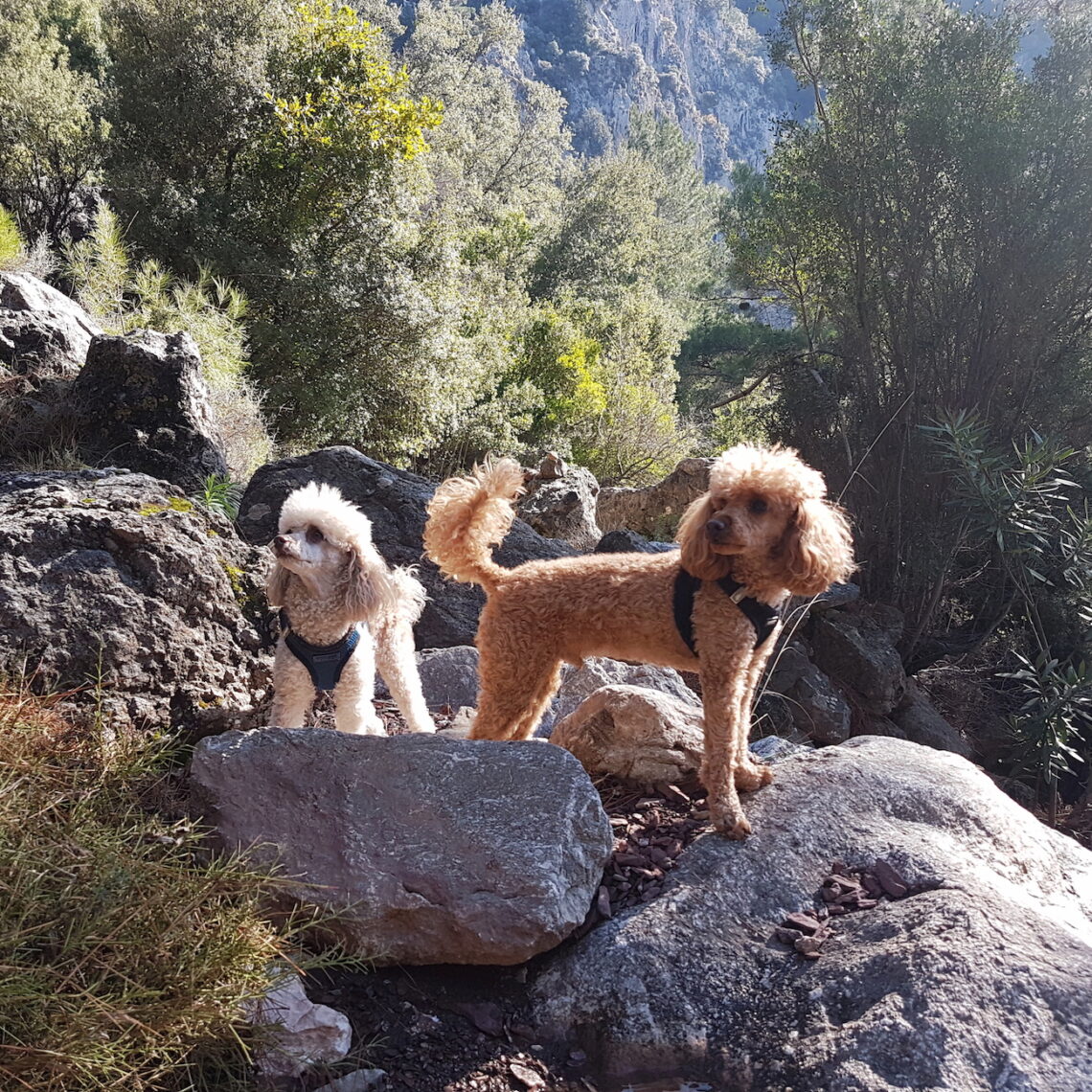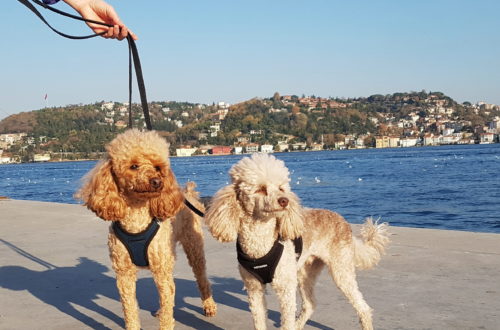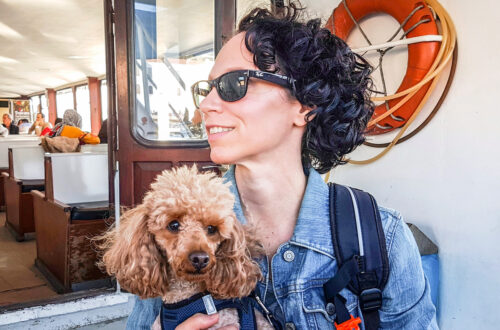
How to Prepare Your Dog for Flying In Cabin
Tips for Flying with a Small Dog in Cabin
Just half a year ago, we had never taken a flight with our two dogs in cabin and we were dreading our upcoming 12-hour flight from Singapore to Poland. We had no idea how our two little fellows would handle the lengthy overnight confinement and how they would respond to the engine noise and jolts from turbulence.
Well, no one got much sleep that night, between our constant monitoring of the dogs’ wellbeing and the complete lack of legroom. But we made it through without any unexpected difficulty and our two dogs had a surprising amount of energy as they bounded out of their carriers to take in their first sniffs of Warsaw.
Now that we’ve taken five flights with our dogs over the past six months, we’re starting to feel like old pros at navigating airports with them and keeping them calm and quiet during the flight.

We’ve compiled our best tips for managing before, during and after a domestic flight with a dog in the cabin. You can read our tips below or watch the video, which follows us along step-by-step as we take a flight from Istanbul to Dalaman, a small city on the southern coast of Turkey. If you’re interested in understanding the requirements of an international flight, we have a separate article and video covering the complex requirements of crossing borders with your dog.
Airline Requirements
When first planning your trip, here are a few items to review closely within the airline’s official pet policy:
- Maximum dimensions of carrier
- Combined weight of carrier and dog
- Requirements related to standing up and turning around within carrier
- Which seat class on which flight allows pets
- Number of pets allowed in cabin
- Cost for bringing a pet in cabin
Passage for your dog can’t be booked online for most airlines so make sure to call as soon as your plans are made. We recommend booking your ticket and your dog’s ticket at the same time over the phone with an airline representative. That way, you can be certain that there is room for both of you on a flight.
It’s also important to be mindful of the length of flight and the length of any layovers. Dogs are not allowed to roam freely in most airports so typically they would end up stuck in their carrier during the layover. Additionally, not every airport offers a space where dogs can stretch their legs and go to the washroom.
Selecting a Carrier
The right carrier can make all the difference for your dog’s comfort during the flight. Consider the following when selecting a carrier:
- Fit within the airlines dimension and weight requirements
- Fit to your dog’s proportions, whether your dog is tall and leggy like a poodle or short and long like a dachshund
- Flexibility for squishing under the seat or even expanding during the flight to provide extra room
- Ventilation
- Rigid bottom with comfortable padding to lay on for long periods
- Comfortable shoulder strap
- Durability
Getting Ready for a Flight
Here are a few tips for what you can do ahead of time to help ensure your dog’s comfort during the flight.
- Minimize water and food intake a couple hours before flight
- Give them one last outing as it’s likely their last opportunity before arriving at the other end
- Bring along wipes or paper towel, in case of an accident when they first pop out of the carrier
- We don’t bring along a blanket or any toys as they may bunch up during the flight and become uncomfortable
Checking In
We recommend arriving well in advance of the flight, even if it’s just a short domestic hop. One reason is that the airline may not allow online check in for your ticket if you have a dog’s passage attached to it. So you may need to plan additional time for an in-person check in. Additionally, the airline will likely want to review the dimensions of your dog’s carrier along with the combined weight of the dog and carrier.
Security Clearance
This can be a stressful point in the journey through the airport as your dog will need to be taken out of the carrier in order to be carried by you through the metal detector. In the meantime, the carrier will go through the x-ray machine along with your other carry-on items.
Generally the combination of being removed from the carrier, confronting a lot of unfamiliar machinery and then being put back in the carrier is a lot for a dog to experience. We try to find a quiet spot afterwards where their nerves can be calmed.
On the Flight
When boarding the flight, we always try to get on the plane early with the families to make sure we have enough time to fit the carriers underneath before the rest of the passengers board. Despite ensuring the right dimensions, it’s always a bit of a squish to get the carrier in the right position, especially on a budget flight.
Generally you can expect to have very little foot room for yourself, so be prepared for a slightly uncomfortable ride.
Some pets may make a bit of noise in their carriers. We find it best to ignore them which encourages them to settle down. We also avoid giving out treats as it might make our dogs thirsty — and giving them water might make them want to have a bathroom break, which really isn’t feasible during a flight.
On Arrival
Offer your dog some water and a small meal on arrival. We find giving a treat helps create a positive experience for our dogs. Similar to humans, your dog will benefit from an acclimation walk in the sunshine, because dogs experience jet lag too.
We always give our two dogs plenty of time the next day to rest up and recover from the stress of the experience. And of course we don’t leave them alone in a new place until they feel more settled.
If you’re interested in how to have a slow travel lifestyle with your dog, click here to subscribe to our YouTube channel.




